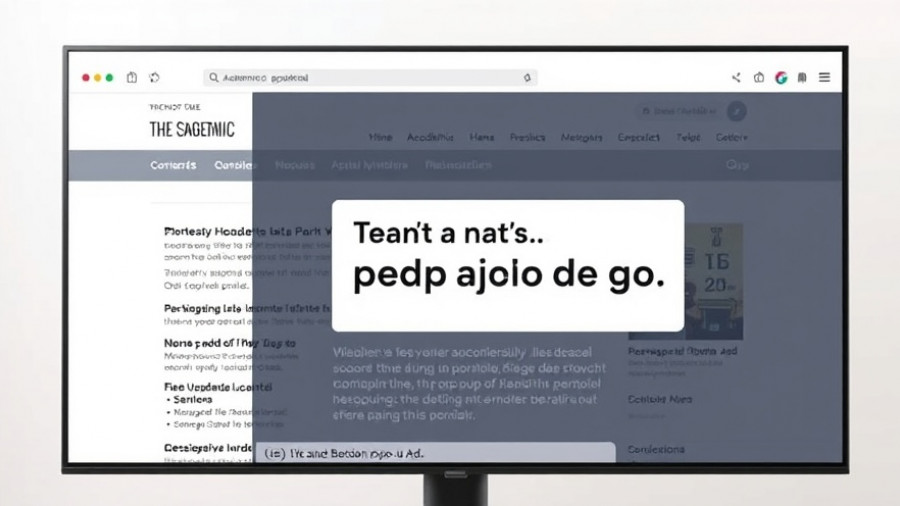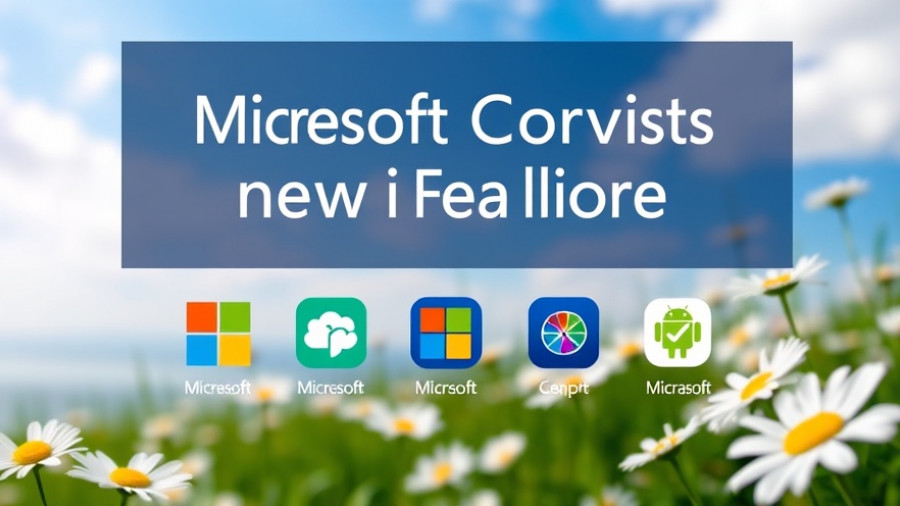
Microsoft’s Bold Move: Luring Top AI Talent Amid Industry Shifts
In an aggressive bid to solidify its standing in the competitive world of artificial intelligence, Microsoft is targeting some of the most sought-after talent from Meta. This strategy not only escalates the hiring war but also showcases how critical AI expertise has become in shaping the future of technology.
Why AI Talent is the New Gold
The ongoing battle for talent comes amid a backdrop of rapid advancements and disruptions in the AI sector. Companies like Microsoft, Meta, and OpenAI are competing fiercely for individuals capable of driving innovation. The escalating salaries and enticing employment packages reflect the value placed on cutting-edge AI skill sets, as leaders in the industry recognize that the right personnel could dictate future success and market dominance.
Meta's Counteroffensive: The Game of Poaching
After Mark Zuckerberg announced the establishment of Meta Superintelligence Labs (MSL), the landscape shifted dramatically. Meta's recent hiring spree included significant investments in AI and aggressive tactics to onboard talent from rivals. Reports indicate that Meta offered staggering compensation packages to draw employees away from both OpenAI and Anthropic, underscoring its determination to not fall behind in AI capabilities.
Microsoft’s Competitive Edge: Crafting Attractive Offers
As Microsoft gears up its recruitment efforts, it appears committed to both matching and potentially exceeding Meta's top salaries. The company's internal documents reveal a structured approach to identify and approach desirable candidates. With its AI division growing rapidly, led by experts such as former Google DeepMind co-founder Mustafa Suleyman, Microsoft is pulling all available resources to attract the best talent. Dedicated recruiting teams are integral in formulating competitive offers meant to entice engineers and researchers from Meta.
The Bigger Picture: Where Does This Leave the Industry?
This tug-of-war for AI talent not only reflects individual company strategies but also illustrates a broader trend affecting the tech industry. As companies invest heavily in AI, the pressure mounts to innovate continuously, with winning the right talent being a crucial component of that success. Both Microsoft and Meta are positioning themselves in a way that could potentially reshape their business trajectories, allowing for greater advancements in AI technologies.
Future Implications: What Lies Ahead?
The rush to consolidate the best minds in AI brings about intriguing implications for the future. Will this create a tech environment dominated by only a few key players, or will it lead to an explosion of innovation as different companies leverage their respective talents? As Microsoft and Meta vie for supremacy, the potential for breakthroughs and advancements in AI becomes monumental.
Conclusion: Keeping an Eye on the Evolving Landscape
As this recruitment battle unfolds, industry watchers must stay alert to how the dynamics evolve in both firms. The decisions made in the coming months regarding talent acquisition and investment in AI will shape the technological landscape for years to come. Understanding these developments can provide insights into future trends in AI and cloud computing. Keep an eye on the continuous narrative of recruitment and innovation, as it will play a crucial role in defining the next chapter of artificial intelligence.
 Add Row
Add Row  Add
Add 




Write A Comment